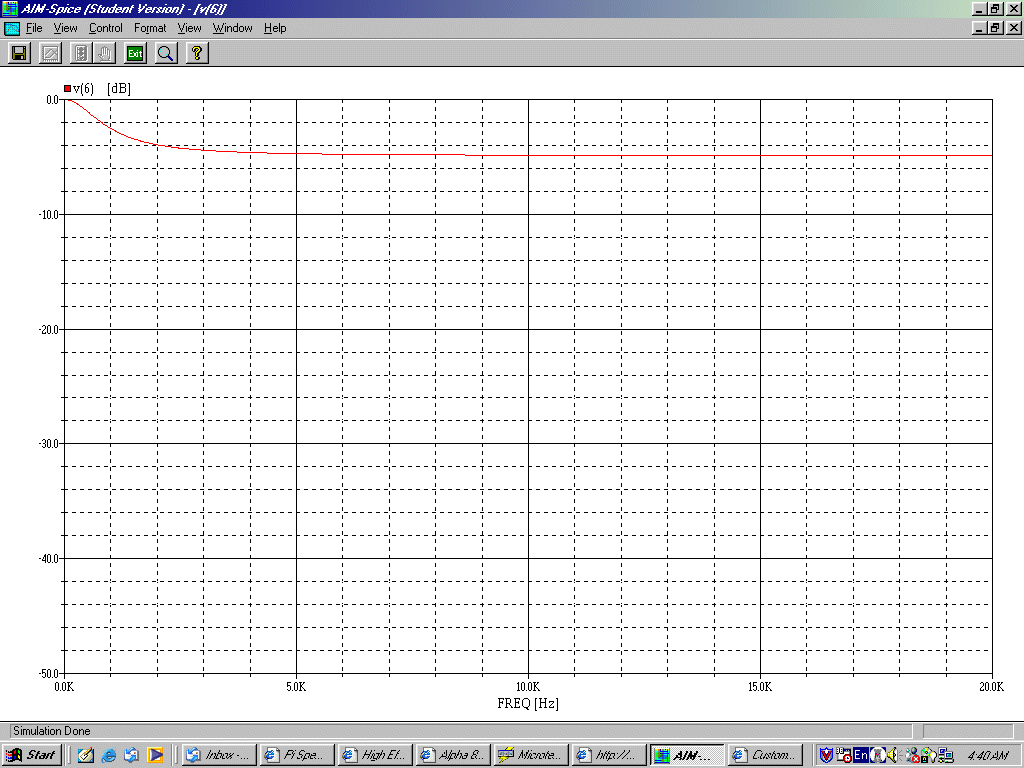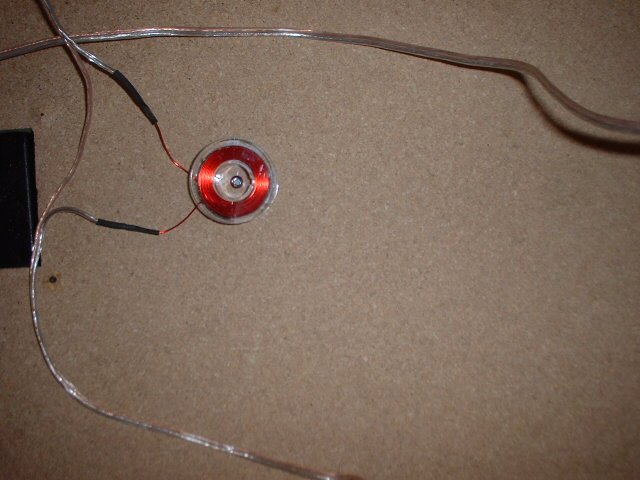I took a moment to build a couple of loudspeakers with cable assemblies containing a 0.5mH coil, and to compare them with equivalent speakers having no coil installed. 0.5mH coil and mounting screw
0.5mH coil and mounting screw
As you might expect the effets are pretty subtle. In fact, Michael listened with me and could not hear any difference until I repeatedly switched between two of the same model speaker - one having the coil installed, and one without. Eventually, he could hear the difference. As for me, I could hear the difference right away, even far off axis in the position I stood while switching the speakers. But then again, I knew what and where to listen for, and I knew how subtle the effect would be.
 Response of 0.5mH Pseudo-Butterworth filter on Alpha 8 and Alpha 10
Response of 0.5mH Pseudo-Butterworth filter on Alpha 8 and Alpha 10
Since it's only about a 5dB difference, this still "fits" well within the +/-3dB "window" that most speakers are rated at. This also means that a speaker that doesn't contain a midrange-attenuating filter as is described in this post is still able to provide response that's flat +/-3dB throughout the bandwidth of the speaker, because the deviation is not that great. All of the great classic Klipsch speakers were rated +/-5dB, which is a 10dB variance, so really the effects of a 5dB rise in the midrange are nothing terribly annoying, and some of you may very well prefer it.
The difference is most striking on the one π Speakers, and it's nice but less so on the two π's. To borrow a "Lowther phrase," it removes a touch of "shout" as a person might expect. But the difference is small enough that some will not notice it immediately, certainly no where near enough to sound muffled in the least. The midrange is still bright and clear.
To be honest, I always felt the little one π's could use a bit less midrange, but I don't like to design by the "seat of the pants." Even if the response curve is slightly biased in one direction of the other in the relatively few environments I'm in, that says nothing about the performance in other environments. So even though the one π's sounded great in the office and in my car, but a little thin in my home and anorexic outdoors, that says nothing about how they would sound in a rock home in Hyderabad, India, a plaster room in Moscow or a very small room in Tokyo. That's why I like to build 'em "by the book" and not to tailor the response according to local conditions.
Honestly, I really like the change. As I said, the two π's don't really need it, but I believe they are improved with the filter, nonetheless. The data presented indicates this is the case as well. The one π's are even more striking, because the bass is made more voluminous, by contrast. Through the upper midrange, where this filter is active, one finds that voices are made slightly less, recorded voices that tended towards "shrill" are made less so.
Specifically, I really liked the system on songs with a lot of pronounced vocal content. "Carry on Wayward Son" by Kansas has vocals that are almost like a barbarshop quartet or other accapella music, but with instrumentals added. The vocals in this song are so predominant they could stand alone, and upper midrange is more pleasant after the filter was installed. Other examples of songs I really noticed an improvment included "Afterglow" by Genesis and "Heart of the Sunrise" by Yes. Jon Anderson has a pure voice and his falsetto is much improved when the speaker isn't "midrange heavy." So all-in-all, I find that the 0.5mH coil provides a subtle benefit, but one that is welcome and well worth doing. All one π and two one π kits will include cable assmeblies with this Pseudo-Butterworth filter from now on.
 Cable assembly for one π amd two π Speakers
Cable assembly for one π amd two π Speakers
The cable assembly containing the 0.5mH coil can still be considered "crossoverless," because the coil doesn't act as a crossover at all. It merely adds inductance to the circuit, and phase is actually changed very little. As you can see from the response chart of the filter, no "crossover" function is performed - The coil merely attenuates midrange frequencies from 1KHz up, and this attenuation is almost perfectly linear. So those that prefer the simplicity of a "crossoverless" design might not feel their objectives defeated by deciding to install this part. It is still a minimal component design.
 Installation of the coil, mounted on the bottom or rear panel
Installation of the coil, mounted on the bottom or rear panel
I found that the coil was best mounted using a small self-tapping screw on the rear or bottom panel. Do not place the coil directly behind the woofer - Offset it down or to one side instead.
 Connection of the various components
Connection of the various components
Connection is still very simple, with the wires from the coil going to the woofer and the straight wire going to the tweeter. Of course, positive goes to positive and negative to negative, on both the woofer and the tweeter.
It's a very simple install, and one that I think is well worth doing.







